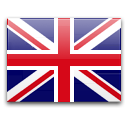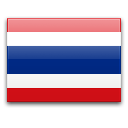Learn How to Contact Emergency Medical Services (EMS) in Critical Situations
1. When Should you Call for Help?
You should always call for help and alert EMS whenever the casualty is seriously ill or injured or if you are not sure what to do in a medical emergency.
When you call your local emergency phone number, you activate the EMS network of responders. You should know the location of the nearest telephone to use in an emergency. It is often stored at the same location as the first aid kit and the AED.
You should call your local emergency number when the casualty is:
- Doesn't respond to voice or touch
- Has chest discomfort, signaling a possible heart attack
- Has signs of a stroke
- Has a problem breathing
- Has a severe injury or burn
- Has a severe bleeding
- Has a seizure
- Suddenly can't move a part of the body
- Has received an electrical shock
- Has been exposed to poison

NOTE: Call EMS with the nearest phone available in an emergency. This could be your phone or the phone of someone who comes to assist you. If possible, put the phone on speaker mode after dialing EMS so that the person delivering emergency care can speak with the dispatcher.
2. Who Should Call for Help?
Shout for help to get assistance from people nearby.
- If a bystander arrives, instruct him to call your local emergency phone number and get the first aid kit and AED.
- If you're alone and have access to a cell phone or a phone that's close by, call your local emergency number yourself. Always put the phone on speaker mode if you can, so that you can hear the dispatcher’s instructions and talk to him while providing first aid.
- If there are other bystanders around you, ask one of them to meet the emergency medical professionals and lead them directly to the scene.
3. Reporting an Accident
The E.T.H.A.N.E. protocol has military roots and is intended to prompt the communicator to remember, or seek out, specific information prior to making the call. By supplying an E.T.H.A.N.E. report, we can ensure the vital information is relayed to the correct persons and allow the most suitable responses to come and assist.
- E - Exact location: in an urban setting, this would be the room number of the floor of the building and the name of the street. In a remote setting, an 8-figure grid reference, or latitude and longitude,
- T - Type of incident: industrial chemical, vehicle collision, drowning, etc.
- H - Hazards: both current and potential (terrain, debris, machinery, fuel spill, fire or explosion risk, weather, etc.).
- A - Access: best route to access the casualty (or avoid particular dangers).
- N - Number of casualties: ideally following triage: delayed, urgent, immediate, or dead.
- E - Equipment required: required and already present.
4. Listen to the Dispatcher's Instructions
The dispatcher can guide you and tell you what to do, such as how to give first aid, give CPR, or use an AED. He may also have questions, so wait until he tells you to hang up the phone. Answering the dispatcher's questions will not delay the arrival of the ambulance. Always know your location when you call EMS; it will help the ambulance reach you faster.



